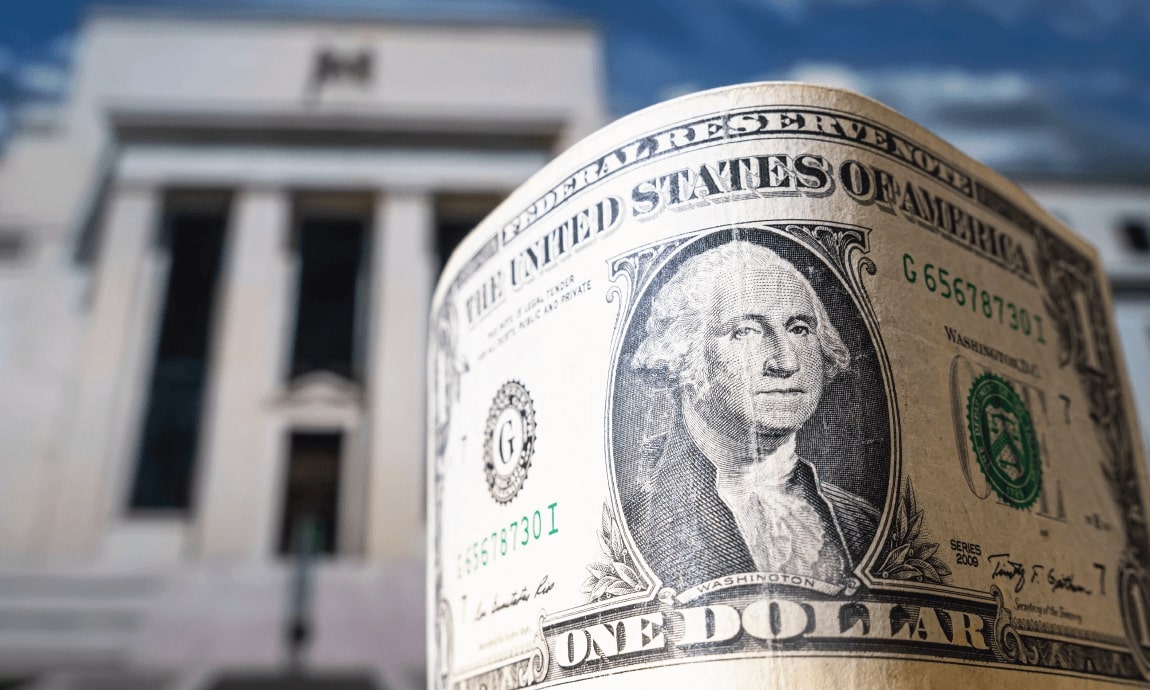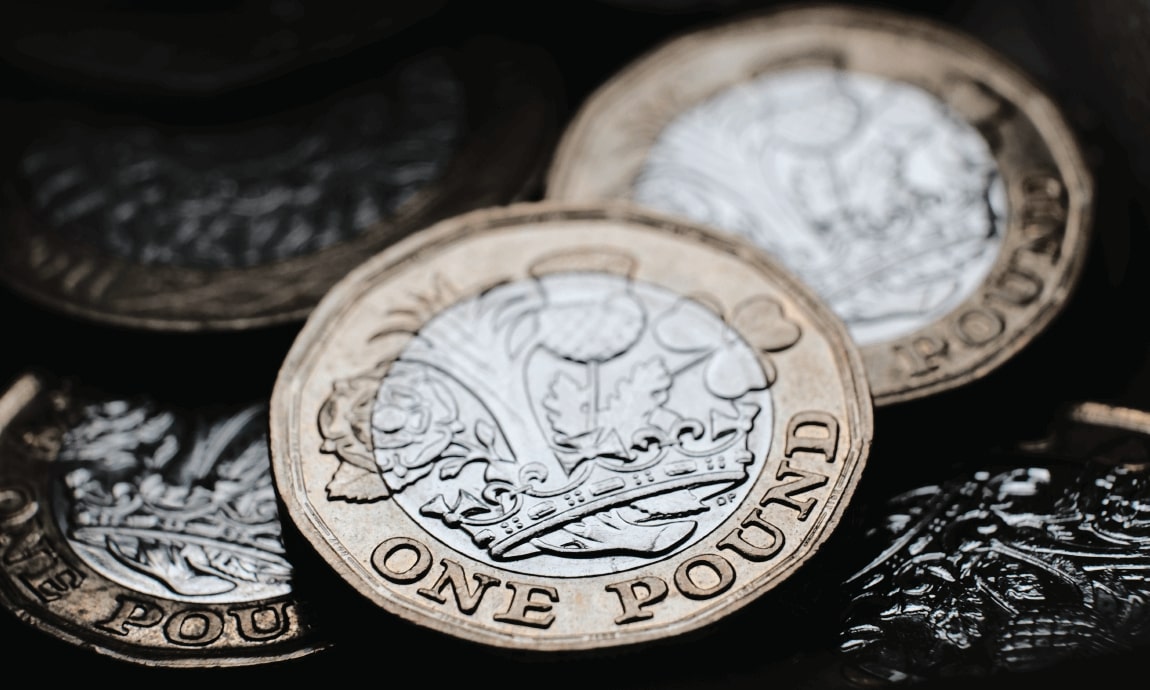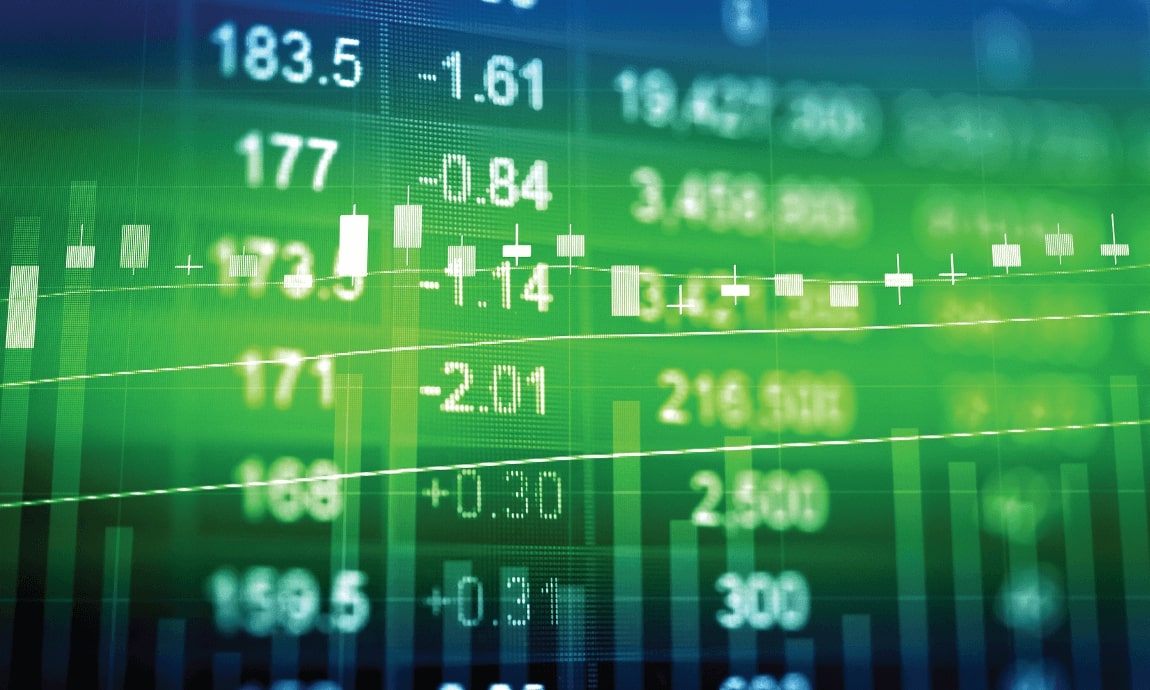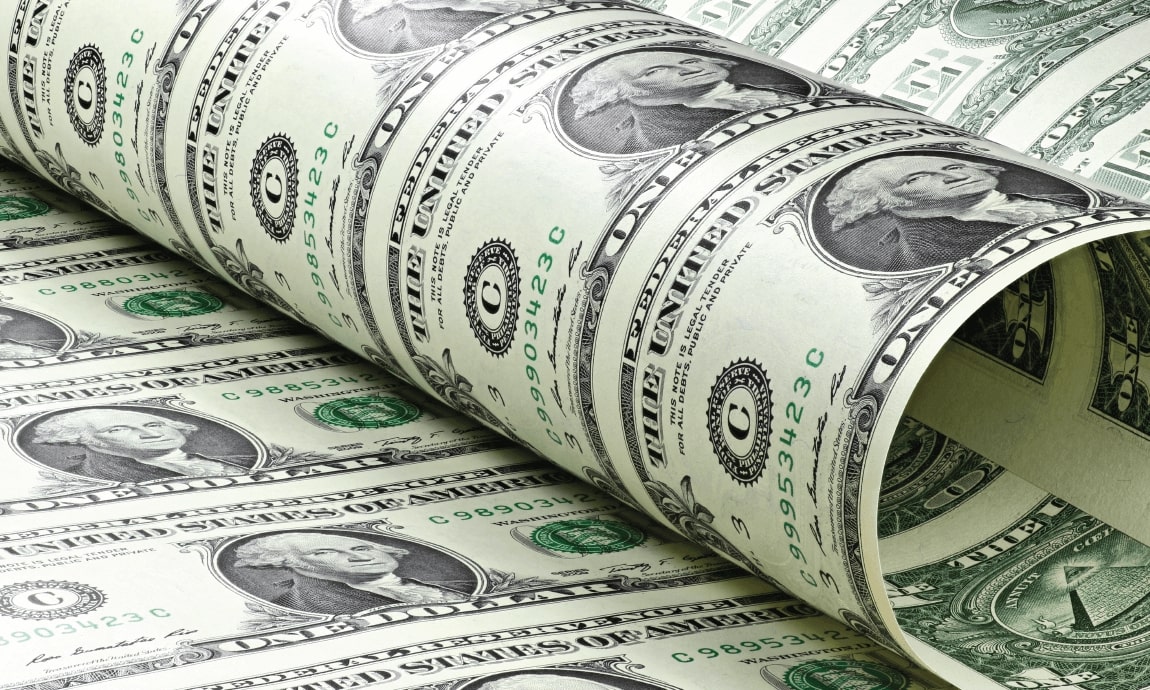The recovering dollar is causing significant losses across the board, with the Euro falling back from recent highs of $1.10 toward $1.0750, the Pound Sterling retreating from $1.24 to $1.20, the Japanese Yen falling from ¥128 to above ¥132, while the risk-sensitive Australian dollar is trading below $0.69 level after touching a six-month high of $0.7150 last week.
The better-than-expected macroeconomics and employment data give the Federal Reserve more headroom to stay hawkish for longer and hike the rate by another two times this year, which could weigh heavily on the dollar price trajectory and sentiment on other risky assets.
The recovering dollar is causing significant losses across the board, with the Euro falling back from recent highs of $1.10 toward $1.0750, the Pound Sterling retreating from $1.24 to $1.20, the Japanese Yen falling from ¥128 to above ¥132, while the risk-sensitive Australian dollar is trading below $0.69 level after touching a six-month high of $0.7150 last week.
The better-than-expected macroeconomics and employment data give the Federal Reserve more headroom to stay hawkish for longer and hike the rate by another two times this year, which could weigh heavily on the dollar price trajectory and sentiment on other risky assets.
The recovering dollar is causing significant losses across the board, with the Euro falling back from recent highs of $1.10 toward $1.0750, the Pound Sterling retreating from $1.24 to $1.20, the Japanese Yen falling from ¥128 to above ¥132, while the risk-sensitive Australian dollar is trading below $0.69 level after touching a six-month high of $0.7150 last week.
The unexpected spike in the labour data has shown that U.S. employment remains strong and resilient despite the slowdown in economic activity, the record-high inflation, and the growing fear of a recession.
The better-than-expected macroeconomics and employment data give the Federal Reserve more headroom to stay hawkish for longer and hike the rate by another two times this year, which could weigh heavily on the dollar price trajectory and sentiment on other risky assets.
The recovering dollar is causing significant losses across the board, with the Euro falling back from recent highs of $1.10 toward $1.0750, the Pound Sterling retreating from $1.24 to $1.20, the Japanese Yen falling from ¥128 to above ¥132, while the risk-sensitive Australian dollar is trading below $0.69 level after touching a six-month high of $0.7150 last week.
The unexpected spike in the labour data has shown that U.S. employment remains strong and resilient despite the slowdown in economic activity, the record-high inflation, and the growing fear of a recession.
The better-than-expected macroeconomics and employment data give the Federal Reserve more headroom to stay hawkish for longer and hike the rate by another two times this year, which could weigh heavily on the dollar price trajectory and sentiment on other risky assets.
The recovering dollar is causing significant losses across the board, with the Euro falling back from recent highs of $1.10 toward $1.0750, the Pound Sterling retreating from $1.24 to $1.20, the Japanese Yen falling from ¥128 to above ¥132, while the risk-sensitive Australian dollar is trading below $0.69 level after touching a six-month high of $0.7150 last week.
On Friday, the U.S. Labour Department announced that NFP-nonfarm payrolls surged by 517,000 jobs in January vs the 185,000 market expectation. Combined with the rebound in the service industry in the same month, it triggered anxiety among investors regarding the outlook on the Fed’s monetary policy.
The unexpected spike in the labour data has shown that U.S. employment remains strong and resilient despite the slowdown in economic activity, the record-high inflation, and the growing fear of a recession.
The better-than-expected macroeconomics and employment data give the Federal Reserve more headroom to stay hawkish for longer and hike the rate by another two times this year, which could weigh heavily on the dollar price trajectory and sentiment on other risky assets.
The recovering dollar is causing significant losses across the board, with the Euro falling back from recent highs of $1.10 toward $1.0750, the Pound Sterling retreating from $1.24 to $1.20, the Japanese Yen falling from ¥128 to above ¥132, while the risk-sensitive Australian dollar is trading below $0.69 level after touching a six-month high of $0.7150 last week.
On Friday, the U.S. Labour Department announced that NFP-nonfarm payrolls surged by 517,000 jobs in January vs the 185,000 market expectation. Combined with the rebound in the service industry in the same month, it triggered anxiety among investors regarding the outlook on the Fed’s monetary policy.
The unexpected spike in the labour data has shown that U.S. employment remains strong and resilient despite the slowdown in economic activity, the record-high inflation, and the growing fear of a recession.
The better-than-expected macroeconomics and employment data give the Federal Reserve more headroom to stay hawkish for longer and hike the rate by another two times this year, which could weigh heavily on the dollar price trajectory and sentiment on other risky assets.
The recovering dollar is causing significant losses across the board, with the Euro falling back from recent highs of $1.10 toward $1.0750, the Pound Sterling retreating from $1.24 to $1.20, the Japanese Yen falling from ¥128 to above ¥132, while the risk-sensitive Australian dollar is trading below $0.69 level after touching a six-month high of $0.7150 last week.
DXY-U.S. dollar index, 2-hour chart
On Friday, the U.S. Labour Department announced that NFP-nonfarm payrolls surged by 517,000 jobs in January vs the 185,000 market expectation. Combined with the rebound in the service industry in the same month, it triggered anxiety among investors regarding the outlook on the Fed’s monetary policy.
The unexpected spike in the labour data has shown that U.S. employment remains strong and resilient despite the slowdown in economic activity, the record-high inflation, and the growing fear of a recession.
The better-than-expected macroeconomics and employment data give the Federal Reserve more headroom to stay hawkish for longer and hike the rate by another two times this year, which could weigh heavily on the dollar price trajectory and sentiment on other risky assets.
The recovering dollar is causing significant losses across the board, with the Euro falling back from recent highs of $1.10 toward $1.0750, the Pound Sterling retreating from $1.24 to $1.20, the Japanese Yen falling from ¥128 to above ¥132, while the risk-sensitive Australian dollar is trading below $0.69 level after touching a six-month high of $0.7150 last week.
DXY-U.S. dollar index, 2-hour chart
On Friday, the U.S. Labour Department announced that NFP-nonfarm payrolls surged by 517,000 jobs in January vs the 185,000 market expectation. Combined with the rebound in the service industry in the same month, it triggered anxiety among investors regarding the outlook on the Fed’s monetary policy.
The unexpected spike in the labour data has shown that U.S. employment remains strong and resilient despite the slowdown in economic activity, the record-high inflation, and the growing fear of a recession.
The better-than-expected macroeconomics and employment data give the Federal Reserve more headroom to stay hawkish for longer and hike the rate by another two times this year, which could weigh heavily on the dollar price trajectory and sentiment on other risky assets.
The recovering dollar is causing significant losses across the board, with the Euro falling back from recent highs of $1.10 toward $1.0750, the Pound Sterling retreating from $1.24 to $1.20, the Japanese Yen falling from ¥128 to above ¥132, while the risk-sensitive Australian dollar is trading below $0.69 level after touching a six-month high of $0.7150 last week.
DXY-U.S. dollar index, 2-hour chart
On Friday, the U.S. Labour Department announced that NFP-nonfarm payrolls surged by 517,000 jobs in January vs the 185,000 market expectation. Combined with the rebound in the service industry in the same month, it triggered anxiety among investors regarding the outlook on the Fed’s monetary policy.
The unexpected spike in the labour data has shown that U.S. employment remains strong and resilient despite the slowdown in economic activity, the record-high inflation, and the growing fear of a recession.
The better-than-expected macroeconomics and employment data give the Federal Reserve more headroom to stay hawkish for longer and hike the rate by another two times this year, which could weigh heavily on the dollar price trajectory and sentiment on other risky assets.
The recovering dollar is causing significant losses across the board, with the Euro falling back from recent highs of $1.10 toward $1.0750, the Pound Sterling retreating from $1.24 to $1.20, the Japanese Yen falling from ¥128 to above ¥132, while the risk-sensitive Australian dollar is trading below $0.69 level after touching a six-month high of $0.7150 last week.
The DXY-U.S. dollar which tracks the value of the greenback against six major peers has rebounded above the 103 mark this morning for the first time since mid-January 2023, getting support from a strong U.S. non-farm payroll report, and higher bond yields.
DXY-U.S. dollar index, 2-hour chart
On Friday, the U.S. Labour Department announced that NFP-nonfarm payrolls surged by 517,000 jobs in January vs the 185,000 market expectation. Combined with the rebound in the service industry in the same month, it triggered anxiety among investors regarding the outlook on the Fed’s monetary policy.
The unexpected spike in the labour data has shown that U.S. employment remains strong and resilient despite the slowdown in economic activity, the record-high inflation, and the growing fear of a recession.
The better-than-expected macroeconomics and employment data give the Federal Reserve more headroom to stay hawkish for longer and hike the rate by another two times this year, which could weigh heavily on the dollar price trajectory and sentiment on other risky assets.
The recovering dollar is causing significant losses across the board, with the Euro falling back from recent highs of $1.10 toward $1.0750, the Pound Sterling retreating from $1.24 to $1.20, the Japanese Yen falling from ¥128 to above ¥132, while the risk-sensitive Australian dollar is trading below $0.69 level after touching a six-month high of $0.7150 last week.
The DXY-U.S. dollar which tracks the value of the greenback against six major peers has rebounded above the 103 mark this morning for the first time since mid-January 2023, getting support from a strong U.S. non-farm payroll report, and higher bond yields.
DXY-U.S. dollar index, 2-hour chart
On Friday, the U.S. Labour Department announced that NFP-nonfarm payrolls surged by 517,000 jobs in January vs the 185,000 market expectation. Combined with the rebound in the service industry in the same month, it triggered anxiety among investors regarding the outlook on the Fed’s monetary policy.
The unexpected spike in the labour data has shown that U.S. employment remains strong and resilient despite the slowdown in economic activity, the record-high inflation, and the growing fear of a recession.
The better-than-expected macroeconomics and employment data give the Federal Reserve more headroom to stay hawkish for longer and hike the rate by another two times this year, which could weigh heavily on the dollar price trajectory and sentiment on other risky assets.
The recovering dollar is causing significant losses across the board, with the Euro falling back from recent highs of $1.10 toward $1.0750, the Pound Sterling retreating from $1.24 to $1.20, the Japanese Yen falling from ¥128 to above ¥132, while the risk-sensitive Australian dollar is trading below $0.69 level after touching a six-month high of $0.7150 last week.
The investment sentiment has soured since last Friday, with investors having a more defencing approach and taking some profits out of the latest four-month rally.
The DXY-U.S. dollar which tracks the value of the greenback against six major peers has rebounded above the 103 mark this morning for the first time since mid-January 2023, getting support from a strong U.S. non-farm payroll report, and higher bond yields.
DXY-U.S. dollar index, 2-hour chart
On Friday, the U.S. Labour Department announced that NFP-nonfarm payrolls surged by 517,000 jobs in January vs the 185,000 market expectation. Combined with the rebound in the service industry in the same month, it triggered anxiety among investors regarding the outlook on the Fed’s monetary policy.
The unexpected spike in the labour data has shown that U.S. employment remains strong and resilient despite the slowdown in economic activity, the record-high inflation, and the growing fear of a recession.
The better-than-expected macroeconomics and employment data give the Federal Reserve more headroom to stay hawkish for longer and hike the rate by another two times this year, which could weigh heavily on the dollar price trajectory and sentiment on other risky assets.
The recovering dollar is causing significant losses across the board, with the Euro falling back from recent highs of $1.10 toward $1.0750, the Pound Sterling retreating from $1.24 to $1.20, the Japanese Yen falling from ¥128 to above ¥132, while the risk-sensitive Australian dollar is trading below $0.69 level after touching a six-month high of $0.7150 last week.
The investment sentiment has soured since last Friday, with investors having a more defencing approach and taking some profits out of the latest four-month rally.
The DXY-U.S. dollar which tracks the value of the greenback against six major peers has rebounded above the 103 mark this morning for the first time since mid-January 2023, getting support from a strong U.S. non-farm payroll report, and higher bond yields.
DXY-U.S. dollar index, 2-hour chart
On Friday, the U.S. Labour Department announced that NFP-nonfarm payrolls surged by 517,000 jobs in January vs the 185,000 market expectation. Combined with the rebound in the service industry in the same month, it triggered anxiety among investors regarding the outlook on the Fed’s monetary policy.
The unexpected spike in the labour data has shown that U.S. employment remains strong and resilient despite the slowdown in economic activity, the record-high inflation, and the growing fear of a recession.
The better-than-expected macroeconomics and employment data give the Federal Reserve more headroom to stay hawkish for longer and hike the rate by another two times this year, which could weigh heavily on the dollar price trajectory and sentiment on other risky assets.
The recovering dollar is causing significant losses across the board, with the Euro falling back from recent highs of $1.10 toward $1.0750, the Pound Sterling retreating from $1.24 to $1.20, the Japanese Yen falling from ¥128 to above ¥132, while the risk-sensitive Australian dollar is trading below $0.69 level after touching a six-month high of $0.7150 last week.
A risk-off mood dominates financial markets on the first trading day of the week, with the U.S. dollar rebounding across the board, while the risk-sensitive currencies are retreating from the recent multi-month highs after a hot US jobs report on Friday last week could provide more room for the Federal Reserve to continue tightening interest rates to combat inflation.
The investment sentiment has soured since last Friday, with investors having a more defencing approach and taking some profits out of the latest four-month rally.
The DXY-U.S. dollar which tracks the value of the greenback against six major peers has rebounded above the 103 mark this morning for the first time since mid-January 2023, getting support from a strong U.S. non-farm payroll report, and higher bond yields.
DXY-U.S. dollar index, 2-hour chart
On Friday, the U.S. Labour Department announced that NFP-nonfarm payrolls surged by 517,000 jobs in January vs the 185,000 market expectation. Combined with the rebound in the service industry in the same month, it triggered anxiety among investors regarding the outlook on the Fed’s monetary policy.
The unexpected spike in the labour data has shown that U.S. employment remains strong and resilient despite the slowdown in economic activity, the record-high inflation, and the growing fear of a recession.
The better-than-expected macroeconomics and employment data give the Federal Reserve more headroom to stay hawkish for longer and hike the rate by another two times this year, which could weigh heavily on the dollar price trajectory and sentiment on other risky assets.
The recovering dollar is causing significant losses across the board, with the Euro falling back from recent highs of $1.10 toward $1.0750, the Pound Sterling retreating from $1.24 to $1.20, the Japanese Yen falling from ¥128 to above ¥132, while the risk-sensitive Australian dollar is trading below $0.69 level after touching a six-month high of $0.7150 last week.
A risk-off mood dominates financial markets on the first trading day of the week, with the U.S. dollar rebounding across the board, while the risk-sensitive currencies are retreating from the recent multi-month highs after a hot US jobs report on Friday last week could provide more room for the Federal Reserve to continue tightening interest rates to combat inflation.
The investment sentiment has soured since last Friday, with investors having a more defencing approach and taking some profits out of the latest four-month rally.
The DXY-U.S. dollar which tracks the value of the greenback against six major peers has rebounded above the 103 mark this morning for the first time since mid-January 2023, getting support from a strong U.S. non-farm payroll report, and higher bond yields.
DXY-U.S. dollar index, 2-hour chart
On Friday, the U.S. Labour Department announced that NFP-nonfarm payrolls surged by 517,000 jobs in January vs the 185,000 market expectation. Combined with the rebound in the service industry in the same month, it triggered anxiety among investors regarding the outlook on the Fed’s monetary policy.
The unexpected spike in the labour data has shown that U.S. employment remains strong and resilient despite the slowdown in economic activity, the record-high inflation, and the growing fear of a recession.
The better-than-expected macroeconomics and employment data give the Federal Reserve more headroom to stay hawkish for longer and hike the rate by another two times this year, which could weigh heavily on the dollar price trajectory and sentiment on other risky assets.
The recovering dollar is causing significant losses across the board, with the Euro falling back from recent highs of $1.10 toward $1.0750, the Pound Sterling retreating from $1.24 to $1.20, the Japanese Yen falling from ¥128 to above ¥132, while the risk-sensitive Australian dollar is trading below $0.69 level after touching a six-month high of $0.7150 last week.







